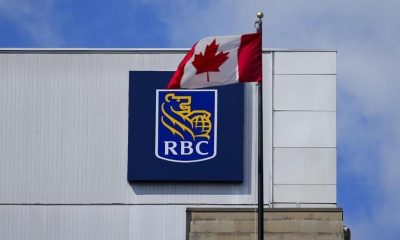OTTAWA — Some called it “Justinflation.” Others called it “greedflation.”
But reality might be a lot less catchy than the wordplay that has taken off in Canadian politics this year.
After enjoying decades of a relatively low and stable inflation rate, Canadians spent 2022 grappling with the highest levels of inflation seen in nearly 40 years.
With the rising cost of living exacerbating pre-existing affordability concerns,politicians raced to point fingers at what — or who — they thought was really causing the problem.
Sometimes, those fingers pointed at Prime Minister Justin Trudeau and his federal Liberals.
“The more the government spends, the more Canadians pay,” Opposition Leader Pierre Poilievre said in the House of Commons in November in French. “That is why we have the highest inflation rate in 40 years. It is ‘Justinflation.'”
The Conservatives, led by Poilievre, have been adamant that government spending is what caused high inflation. Meanwhile, New Democrats say greedy corporations are at fault for jacking up prices at the expense of Canadians.
But the truth is more complicated, says University of Calgary economics professor Trevor Tombe.
“It’s not new for complex issues to be oversimplified by politicians of all political stripes,” Tombe said.
Inflation first started climbing in mid-2021, coinciding with the reopening of the Canadian economy after several pandemic shutdowns. As prices continued to skyrocket in 2022, with the country’s annual inflation rate peaking at 8.1 per cent in June, inflation became a focal point in politics.
University of Laval economics professor Stephen Gordon says most economists agree that a slew of factors pushed inflation well above the Bank of Canada’s two per cent target. Global events, including the Russian invasion of Ukraine and supply chain disruptions caused by the pandemic, constrained supply of goods and pushed up prices.
There’s also been increasing discussion of domestic factors that have played into inflation, including fiscal and monetary stimulus during the pandemic.
The federal government responded to COVID-19 with a range of pandemic support programs that delivered billions of dollars to people and businesses to mitigate financial losses from lockdowns.
The Bank of Canada also injected stimulus into the economy by slashing interest rates to near zero and buying up government bonds to lower rates even further and encourage spending, a strategy followed by other central banks worldwide.
That stimulus was likely excessive, the Bank of Canada now acknowledges.
In a speech at the University of Waterloo in September, its deputy governor Paul Beaudry said that a faster global withdrawal of fiscal and monetary stimulus during the recovery from the pandemic would have likely resulted in lower inflation.
The federal government has stood by its assertion that inflation is the result of global factors outside the control of Canada.
In an interview with The Canadian Press this week, Prime Minister Justin Trudeau said that “part of the lesson around this inflation crisis was the disruptions in global supply chains,” and his government will focus on “making sure we’re much more resilient, making sure that we’re there as a reliable partner to countries.”
Tombe said Ottawa can’t skirt responsibility for the impact of its domestic policies, with rising housing costs also contributing to inflation.
Still, he said, the critiques of pandemic stimulus are being delivered with the benefit of hindsight.
“Some of the income support programs look too large now, but only because we were so successful in combatting what could have been a much, much deeper and more painful public-health and economic crisis,” Tombe said, adding that the programs alone do not account for the 8.1 per cent peak inflation rate.
Gordon agreed that the programs’ effects were not predictable at the beginning of the pandemic. “Nobody knew at the time what the appropriate amount was.”
The NDP, which fought for increases to the amounts that pandemic programs paid out, has largely accused private-sector interests for worsening the problem.
“We know that corporate greed is driving up the cost of living,” NDP Leader Jagmeet Singh said during question period in September. “So what is the government going to do to tackle ‘greedflation’ caused by corporate greed?”
Corporate profits have recently been rising as a share of gross domestic product, while the share of GDP made up of workers’ wages is falling, leading the NDP to accuse companies of benefiting from high inflation.
However, Tombe says the rise in corporate profits is complicated. A look at the grocery industry, for example — one often cited by the NDP — shows that margins are not up.
Loblaw, in particular, has caught attention for its record profits. Last month, the grocer reported that its third-quarter profits rose about 30 per cent compared with a year ago.
Earlier this month, Loblaw’s senior vice-president of retail finance Jodat Hussain was called to testify on food inflation before MPs on the House of Commons agriculture committee. He said Loblaw has been raising prices because suppliers are charging more, and that the company’s gross margins on food have remained stable.
Oil and gas companies have also been reaping record profits with energy prices rising globally. But Tombe said Canadian oil and gas companies are price-takers heavily influenced by the international market.
There have been some recent signs that inflation in Canada is easing. After peaking in June, the annual inflation rate fell to 6.9 per cent in October. However, the road back to two per cent inflation is expected to be a long one.
Though the Bank of Canada recently said it may be able to pause its aggressive interest-rate hikes, it does not expect inflation to fall back to target until 2024.
Tombe said that while it is important to learn from Canada’s recent experience with inflation, there are many important policy issues that will require thinking ahead instead of backward.
“It’s disappointing for me to see most of the political conversation trying to place blame.”
This report by The Canadian Press was first published Dec. 17, 2022.
Nojoud Al Mallees, The Canadian Press
Source link
Related






















